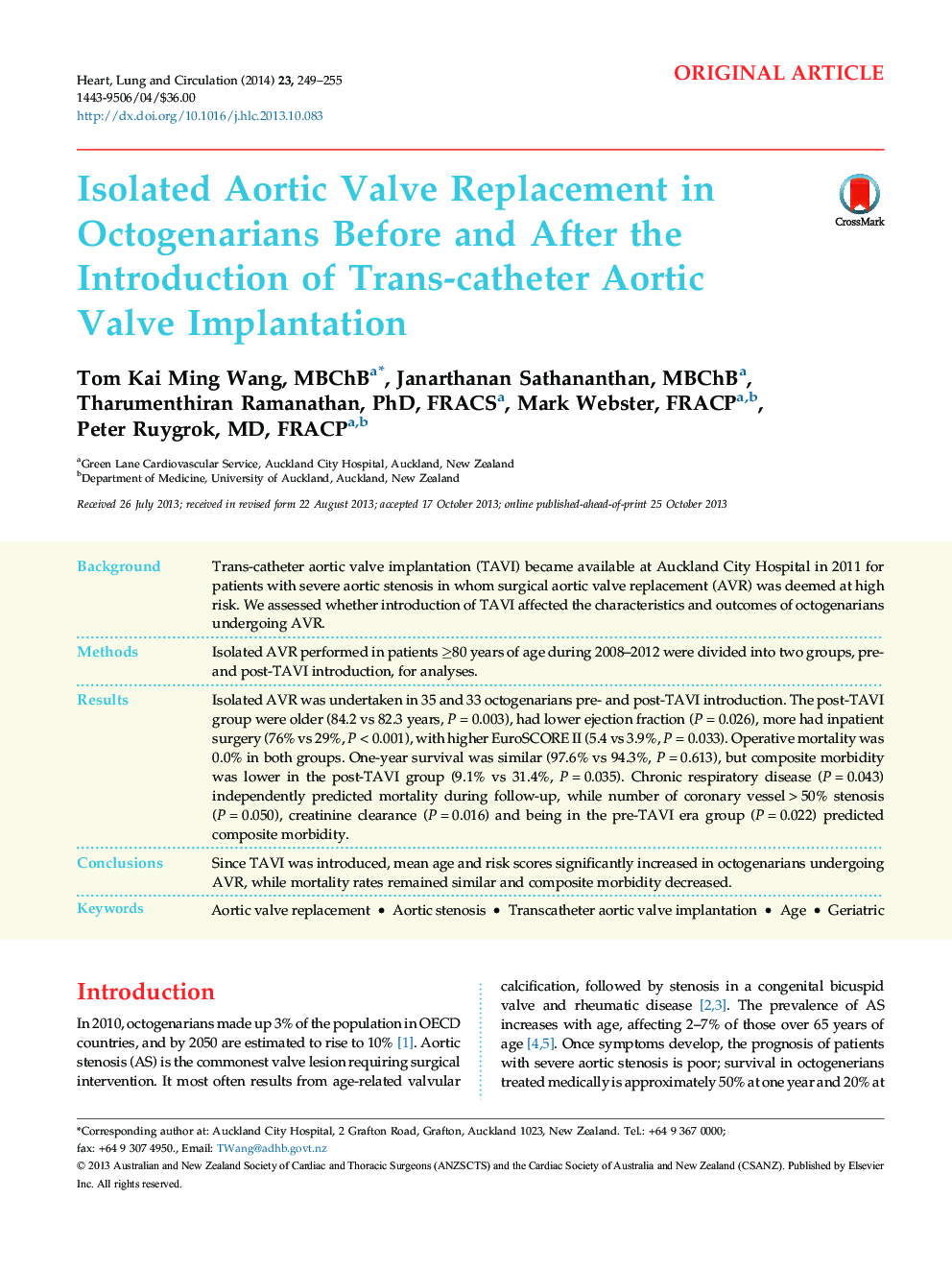| Article ID | Journal | Published Year | Pages | File Type |
|---|---|---|---|---|
| 2917865 | Heart, Lung and Circulation | 2014 | 7 Pages |
BackgroundTrans-catheter aortic valve implantation (TAVI) became available at Auckland City Hospital in 2011 for patients with severe aortic stenosis in whom surgical aortic valve replacement (AVR) was deemed at high risk. We assessed whether introduction of TAVI affected the characteristics and outcomes of octogenarians undergoing AVR.MethodsIsolated AVR performed in patients ≥80 years of age during 2008–2012 were divided into two groups, pre- and post-TAVI introduction, for analyses.ResultsIsolated AVR was undertaken in 35 and 33 octogenarians pre- and post-TAVI introduction. The post-TAVI group were older (84.2 vs 82.3 years, P = 0.003), had lower ejection fraction (P = 0.026), more had inpatient surgery (76% vs 29%, P < 0.001), with higher EuroSCORE II (5.4 vs 3.9%, P = 0.033). Operative mortality was 0.0% in both groups. One-year survival was similar (97.6% vs 94.3%, P = 0.613), but composite morbidity was lower in the post-TAVI group (9.1% vs 31.4%, P = 0.035). Chronic respiratory disease (P = 0.043) independently predicted mortality during follow-up, while number of coronary vessel > 50% stenosis (P = 0.050), creatinine clearance (P = 0.016) and being in the pre-TAVI era group (P = 0.022) predicted composite morbidity.ConclusionsSince TAVI was introduced, mean age and risk scores significantly increased in octogenarians undergoing AVR, while mortality rates remained similar and composite morbidity decreased.
